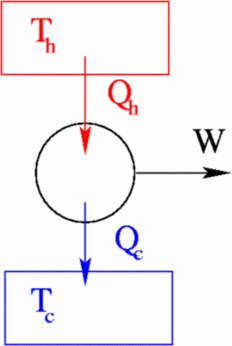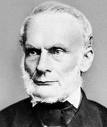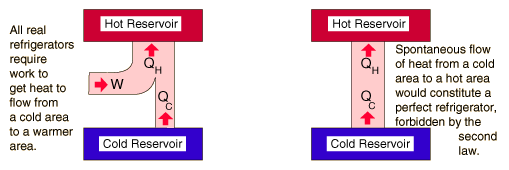
 As I have indicated,
much of the development of thermodynamics took place during the
nineteenth century as it became important to develop more and
more efficient "heat engines"
(initially steam engines, later internal combustion and diesel
engines). Where we use the term heat engine to describe any device which,
working in cycles between hot and cold reservoirs (whose
temperatures remain constant), converts heat into work. A
schematic representation of a heat engine is shown at
right. Note that in each cycle the net result of the
engine is to convert an amount of heat QH - QC
to an equal amount of work, W.
As I have indicated,
much of the development of thermodynamics took place during the
nineteenth century as it became important to develop more and
more efficient "heat engines"
(initially steam engines, later internal combustion and diesel
engines). Where we use the term heat engine to describe any device which,
working in cycles between hot and cold reservoirs (whose
temperatures remain constant), converts heat into work. A
schematic representation of a heat engine is shown at
right. Note that in each cycle the net result of the
engine is to convert an amount of heat QH - QC
to an equal amount of work, W.
 CLAUSIUS
STATEMENT:
CLAUSIUS
STATEMENT: 


![]()
Early
morning Physics class filled with slightly dazed freshmen. Eager
beaver postdoc teaching the class asks "The wavelength of the
Sodium yellow line. What is it? You there!" Fortunately, he has
his eagle eye on the guy next to me, who mutters and replies "A
hundred and one?"
"Hah!" says the postdoc "A hundred and one what?"
"Um, a hundred and one, point two?"
Dr. C. L. Davis
Physics Department
University of Louisville
email: c.l.davis@louisville.edu
